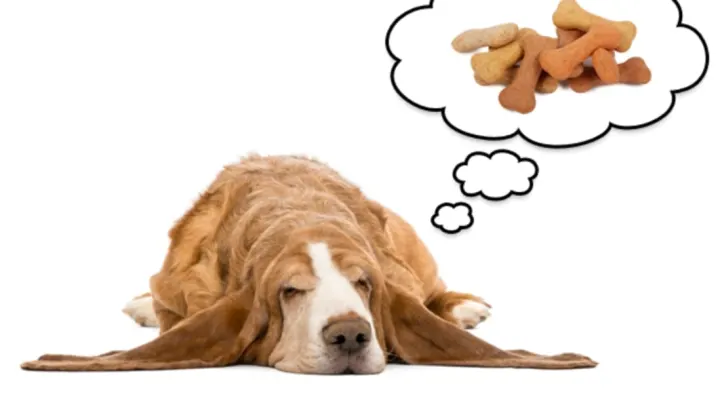As the world quiets during the night, an interesting question arises: Do animals dream? Consider your cat sleeping on the edge or a squirrel tucked in the trees. What secrets are revealed in their slumber? Did you know that not all animals dream in the same way that we do? Some animals may be able to enter the enchanted world of dreams. Join us on a journey to discover the unique stories of animal dreams. Can it be so that those fluttering wings and gentle paw movements hint at a realm of nightly adventures in the wide tapestry of the animal kingdom?
Sleep and Dreams in the Animal Kingdom

“Almost all animals, from tiny insects to large mammals, have times when they rest or are less active. However, not all of them truly ‘sleep’ in the way we understand it,” explained Dr. Emily Johnson, a zoologist specializing in animal behavior. “Real sleep involves a significant change in brain activity, and it’s not just about stopping movement. Some insects like flies and crabs do show signs of sleep, but it’s more common in animals with backbones, like vertebrates.
“The first animals that could be considered deep sleepers with a changed brain state likely lived over 250 million years ago. All animals that develop in an amniotic sac, which includes reptiles, birds, and mammals, experience deep sleep. This deep sleep shows up as a distinct pattern in brain activity called ‘slow-wave sleep’ (SWS).”
REM sleep, which comes after a long period of SWS, seems to have appeared later in evolution. It’s found in all mammals and birds, but there’s been some uncertainty about its presence in reptiles. Recent research on a type of lizard called Australian dragons suggests that they might also have some degree of REM sleep, indicating that the ancestor of reptiles, birds, and mammals might have been the first to experience REM.
However, in some reptiles today, like Australian dragons, REM sleep is limited and might even be absent in some species. Birds and mammals, which regulate their internal temperature (they are ‘warm-blooded’), seem to have embraced REM sleep more. This might be because their metabolism allows or requires more time spent in REM sleep.
How do scientists know if animals dream?

Ever wondered if your furry (or feathery) friend dreams of chasing squirrels or catching frisbees? Scientists are hot on the trail of this mystery using some cool tech. One tool is electroencephalography (EEG), which is basically a fancy way of measuring brain waves. When humans dream during REM sleep (that’s when our eyes flicker under our lids), our EEGs show specific patterns. Interestingly, scientists are seeing similar patterns in animal brains during REM sleep too! This brainwave connection hints that animals, just like us, might be experiencing dreamscapes. Researchers also study animal sleep behaviors – does your dog twitch its paws or whimper in its sleep? These behaviors could be clues to what’s happening in their dreams. By combining EEG and sleep behavior monitoring, science is cracking the code on animal dreams. So, the next time you see your pet snoozing, who knows what adventures they might be having in dreamland!pen_sparktunesharemore_vert
Which animals dream like humans?
Animals that share similarities in sleep patterns with humans, particularly in experiencing REM (Rapid Eye Movement) sleep, are considered likely candidates for dreaming. Some examples include:
- Dogs: Man’s best friend often exhibits signs of dreaming during REM sleep, with observable twitching, facial movements, and even vocalizations.
- Cats: Like dogs, cats also demonstrate REM sleep characteristics, such as twitching of whiskers, paws, and tails, suggesting potential dream-like states.
- Birds: Certain avian species, especially those with complex brains, go through REM sleep, indicating that they might engage in dream-like experiences.
- Other Mammals: Animals with more developed brains, such as elephants and dolphins, are believed to experience REM sleep, hinting at the possibility of dream-like states.
How are dreams of animals different from those of humans?
Differences in neurobiology and behavior between animals and humans suggest variations in the nature of their dreams. While the precise content of animal dreams remains elusive, distinctions emerge:
- Survival Instincts: Animal dreams likely revolve around survival needs, such as hunting strategies, territory marking, and interactions with their environment. Humans, on the other hand, may dream more intricately about complex daily experiences.
- Instinctual Behaviors: Animal dreams may be closely tied to instinctual behaviors essential for their species’ survival, such as escape strategies or social interactions. Human dreams, influenced by a broader range of experiences, can encompass a diverse array of scenarios.
- Communication and Social Structures: Animals with social structures might dream about interactions within their groups. Human dreams often involve intricate social scenarios influenced by the complexity of human relationships.
- Sensory Perception: Differences in sensory perception, such as heightened senses in some animals, could shape the way they experience and process dream content compared to humans.
So, as you drift into your dreams, remember, somewhere out there, the world is alive with the whimsical tales of animal dreams, creating a little bit of enchantment under the night sky. For more of such interesting articles, check out our Entertainment Section.



